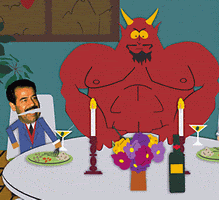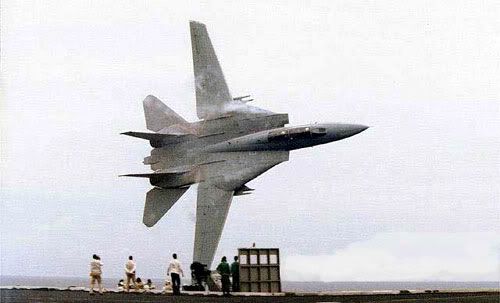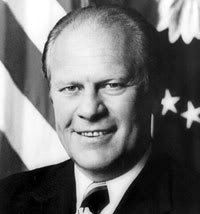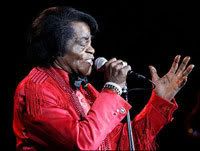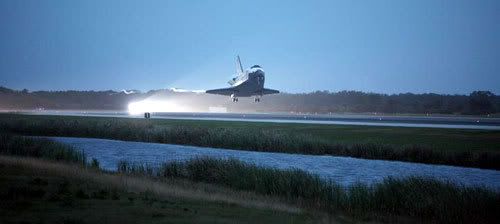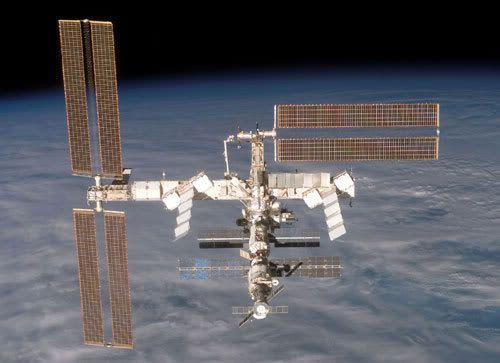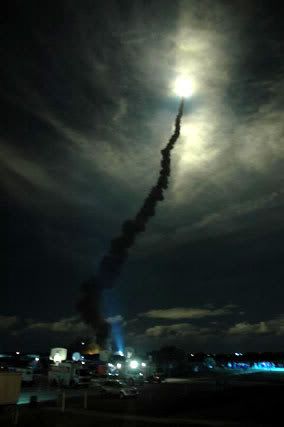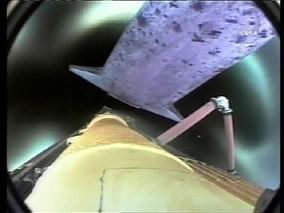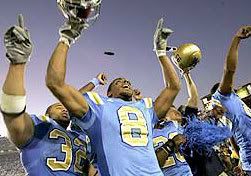TOP 10 APOLLO HOAX THEORIES. For all of you conspiracy theorists out there... "We went to the Moon to beat the Soviets. If the Soviets had suspected that we faked these missions in any way, they would have been screaming at the top of their lungs."
(This article is courtesy of Space.com.)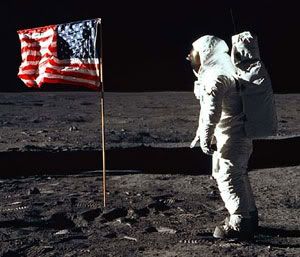 10.) FLUTTERING FLAG: "The American flag appears to wave in the lunar wind."The Science
10.) FLUTTERING FLAG: "The American flag appears to wave in the lunar wind."The Science: If you look closely, you will notice the flag's edges are pulled taut. This effect, which was done purposely as to not allow the flag to just hang flat, was created by inserting a stiff wire into the fabric. The "flutter" was created as the astronauts worked to erect the flag. As the wire was adjusted, "Old Glory" appeared to wave.
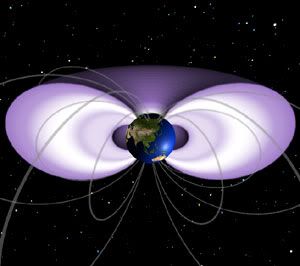 9.) GLOW-IN-THE-DARK ASTRONAUTS: "If the astronauts had left the safety of the Van Allen Belt the radiation would have killed them."The Science
9.) GLOW-IN-THE-DARK ASTRONAUTS: "If the astronauts had left the safety of the Van Allen Belt the radiation would have killed them."The Science: The Van Allen Belts are created by Earth's magnetic field, and protect the planet from dangerous solar radiation. The Belts collect this radiation, and traps it in a layer surrounding the Earth. But unless you deliberately caused your spaceship to hover within this layer, for many hours or days, the radiation exposure is well below dangerous levels. The Apollo astronauts passed through the Belts in less than four hours total for the trip. "It's not much more serious than getting a chest x-ray," said Phil Plait, an astronomer at Sonoma University in California. Outside the Belt, the radiation drops to low levels that are only dangerous over extremely long periods of time.
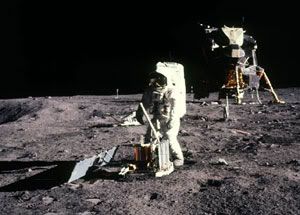 8.) THE SHADOW KNOWS: "Multiple-angle shadows in the Moon photos prove there was more than one source of light, like a large studio lamp."The Science
8.) THE SHADOW KNOWS: "Multiple-angle shadows in the Moon photos prove there was more than one source of light, like a large studio lamp."The Science: The astronauts were taking their photos on a hilly, brightly-lit landscape while the Sun was close to the horizon. Imagine taking a photograph of someone on a rolling, uneven field of snow during a full, low-hanging Moon. The contours of the ground would produce shadows of many different lengths.
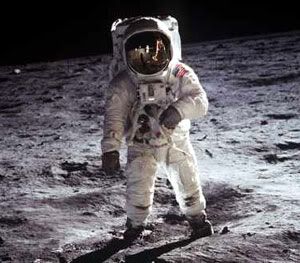 7.) FRIED FILM: In the Sunlight, the Moon’s temperature is a toasty 280 degrees Fahrenheit. The film (among other things) would have melted.The Science
7.) FRIED FILM: In the Sunlight, the Moon’s temperature is a toasty 280 degrees Fahrenheit. The film (among other things) would have melted.The Science: No one was leaving bare film out on the hot lunar surface. All material was contained in protective canisters. In addition, at the time the Apollo missions landed, they were either at lunar dawn or dusk. As a result, the temperature was more easily manageable.
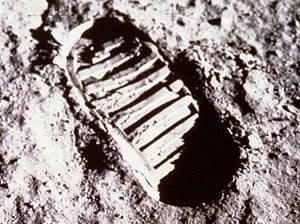 6.) LIQUID WATER ON THE MOON: To leave a footprint requires moisture in the soil, doesn’t it?The Science
6.) LIQUID WATER ON THE MOON: To leave a footprint requires moisture in the soil, doesn’t it?The Science: Not always. If you take some dry fine-grained dust such as talcum powder and dump it out, it's easy to make tracks in it that hold their shape. The particles hold their positions due to the friction between them.
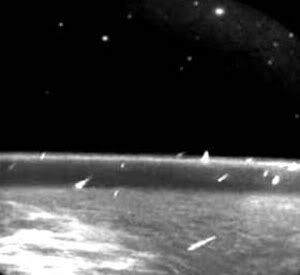 5.) DEATH BY METEOR: Space is filled with super-fast micro meteors that would punch through the ship and kill the astronauts.The Science
5.) DEATH BY METEOR: Space is filled with super-fast micro meteors that would punch through the ship and kill the astronauts.The Science: Space is really amazingly big. While there are indeed an uncountable number of tiny pieces of debris traveling through the Solar System at speeds in the neighborhood of 120,000 MPH, the volume of space keeps the density low. The chance of any given cubic yard of space having a micro-meteor passing through it is incredibly close to zero. Additionally, the astronauts' suits included a layer of Kevlar to protect them from any tiny fragment they might encounter.
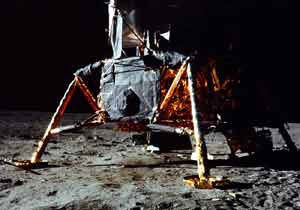 4.) NO CRATER AT LANDING SITE: When the Lunar Excursion Module (LEM) landed, its powerful engine didn’t burrow a deep crater in the "dusty surface".The Science
4.) NO CRATER AT LANDING SITE: When the Lunar Excursion Module (LEM) landed, its powerful engine didn’t burrow a deep crater in the "dusty surface".The Science: Beneath the layer of dust, the Moon is made up of fairly densely-packed rock. What dust and loose dirt there was though, was "kicked up" as referenced by the astronauts and captured in their landing films.
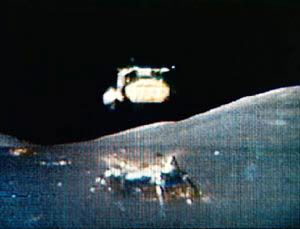 3.) PHANTOM CAMERAMAN: How come in that one video of the LEM leaving the surface, the camera follows it up into the sky? Who was running that camera?The Science
3.) PHANTOM CAMERAMAN: How come in that one video of the LEM leaving the surface, the camera follows it up into the sky? Who was running that camera?The Science: The camera was controlled remotely from Earth...by Mission Control at NASA's Johnson Space Center in Houston, Texas.
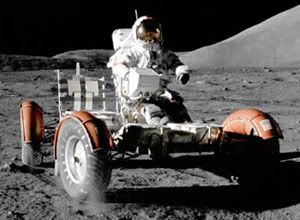 2.) BIG ROVER: There’s no way that big moon buggy they were driving could have fit into that little landing module!The Science
2.) BIG ROVER: There’s no way that big moon buggy they were driving could have fit into that little landing module!The Science: The rover was very cleverly constructed to be made out of very light materials, and designed to fold up to about the size of a large suitcase.
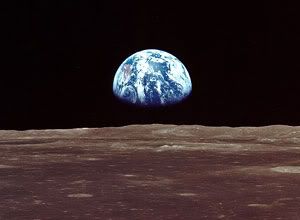 1.) IT’S FULL OF STARS! Space is littered with little points of lights (stars). Why then are they missing from the photographs?The Science
1.) IT’S FULL OF STARS! Space is littered with little points of lights (stars). Why then are they missing from the photographs?The Science: If you've ever taken a photograph outside at night, you'll notice that faint distant objects don't show up. That's not because the air blocks them—it's because the brightness of the nearby objects washes out the film. In fact if you were standing on the day side of the Moon, you'd have to somehow block the landscape out in order for your eyes to adapt enough to see the stars.
Also, check out any modern-day photograph of a Space Shuttle or the International Space Station in orbit, and you won't see any background stars in those pictures as well. This also applies to images taken by interplanetary spacecraft at Mars, Saturn, Venus and all the other planets.




